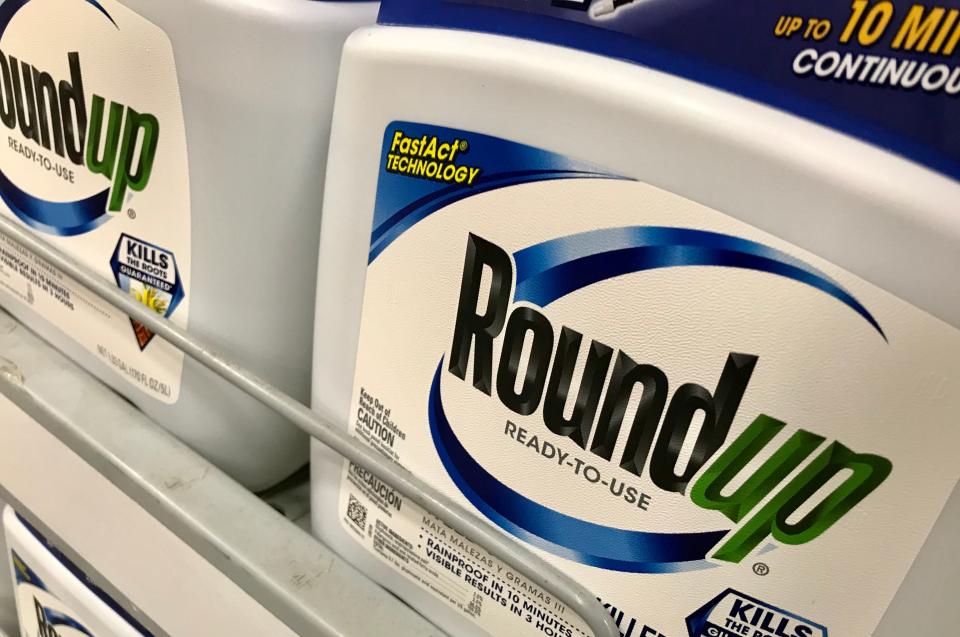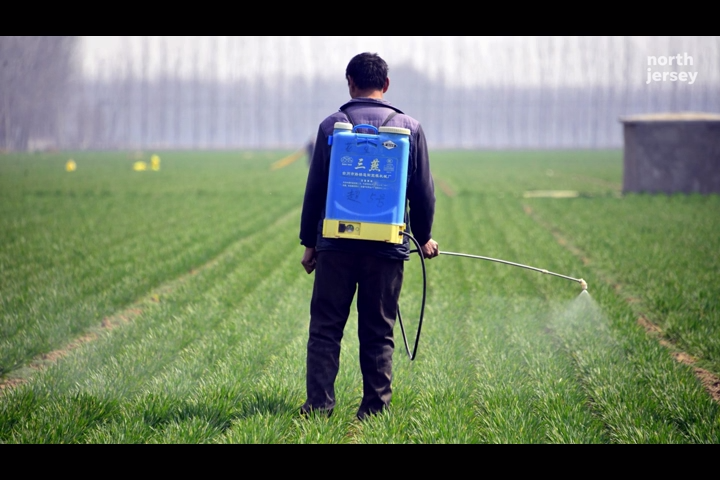A Stroll Through the Garden: The glyphosate debate - is the end in sight?
One of my friends asked about a topic that I have been talking about for a number of years. She wanted to know whether or not I would recommend using Roundup to help control weeds under her future fence.
She told me she was going to install fence in her backyard. She said she wondered whether her little dog would be affected by the Roundup if she would use it around the fence. Does regular exposure to glyphosate and a smaller body size mean a greater chance of being harmful to smaller animals? I wasn’t sure, and lately I hadn’t been following the latest news on the glyphosate debate.
My initial solution is a trench 1 foot wide by 6 inches deep running the full length of the fence line. Backfill the trench with gravel on top of a landscape fabric to keep the weeds down and sprinkle an ovicide. The weed preventative called Preen is 100% corn gluten, and does have a history of being effective to keeping weeds down.

Bayer bought the holding interest of Monsanto, the owner of RoundUp, on June 7, 2018. With the 125,000 lawsuits and having spent $10 billion in settlements last year and realizing only 75% have been finished and more suits are coming, something is about to change. The glyphosate-based herbicide contributed to each of the plaintiff's non-Hodgkin’s lymphoma, according to the lawsuits. Most of the lawsuits are from residential users.
No more Roundup on residential sales shelves starting next year
We now see CEO Werner Bauman and Bayer will stop all residential sales in the U.S. beginning in 2023. Bauman hopes this move will manage the litigation risk; not because of any safety concerns. U.S. Environmental Protection Agency and other public health groups are welcoming Bayer’s decision. A total of 825,804 kilograms of glyphosate was used worldwide in 2014, which points to the gravity of the challenge. The end is in sight.
Glyphosate, or N-phosphonomethyl-glycine, has been the most common herbicide in use around the world for decades. It works by blocking a metabolic pathway called the Shimitake Pathway, which produces the amino acids phenylalanine, tyrosine and tryptophan. Without these amino acids, the plants shrivel and dies. This compound does not kill just one plant but all plants.
Normal classification places glyphosate in the broad-spectrum herbicide category. Only genetically modified plants will be able survive this compound. More recently farmers have been using Roundup to bring all of the beans, wheat and oats to a dry state at the same time. Roundup by itself consists of 41% of glyphosate, 1.5% organic acids of glyphosate, .5% of isopropylamine, and 15.4% polyethoxylated tallow amine surfactant of which we still don’t have all of the information we need to make the ultimate decision because of the trade secrets Monsanto and Bayer still retain.
A look at a Roundup trade secret
One of the trade secret ingredients polyoxyethylene alkylamine or (POEA), which is a surfactant, has been leaked to the public. Research has revealed POEA was harmful to the living cells and 2,000 times more toxic than a low dose of glyphosate. Most regulatory bodies consider (POEA) as inactive and thus require no risk assessment. I don’t understand why.

The International Journal of Environmental Research and Public Health reported the endocrine disruption was demonstrated due to the co-formulants or inert/confidential compounds. Additionally, The Institute of Science in Society (ISIS), in 2014 published that the POEA added in Roundup weed killer is most toxic to human cells and also increases the glyphosate toxic effects. Multiple studies have presented that the Roundup formulation is far more dangerous than glyphosate alone, making it clear that inert ingredients in this herbicide are not as inert as they’re called.
To help answer the rest of my friend’s question, I think you won’t find any Roundup on the store shelves in January. For farmers and landscapers, you will continue to find you have access to Roundup. One good thing about this is they have been trained in how to use this compound properly.
I hope you have a great stroll through your garden this week. If you have some challenges, let me know, and I shall try to help. Drop an email to me at ericlarson546@yahoo.com. Soon I shall be posting my columns in the form of blogs at ohiohealthyfoodcooperative.org. Thank you for participating in our column.
Eric Larson of Jeromesville is a veteran landscaper and gardening enthusiast and a founding board member of the Ohio Chapter of Association of Professional Landscape Designers.
This article originally appeared on Mansfield News Journal: Garden Stroll: The glyphosate debate and the use of Roundup

